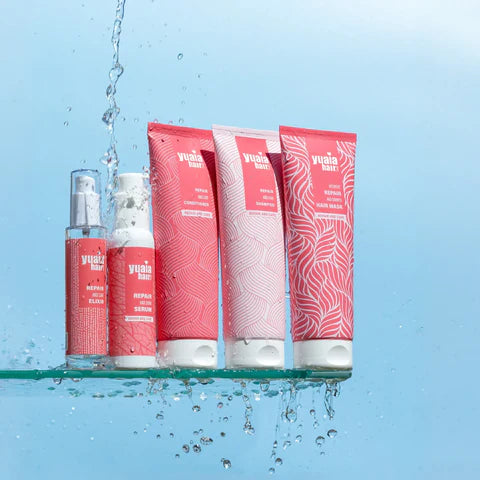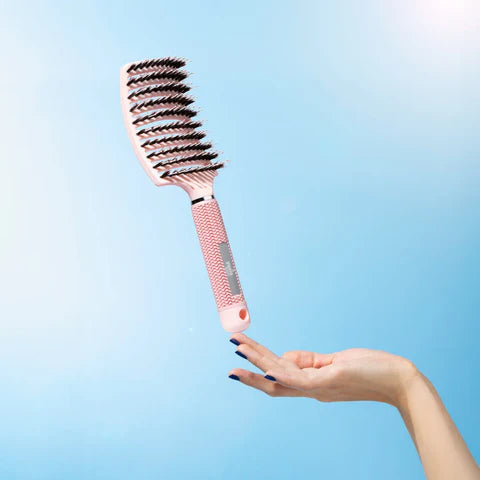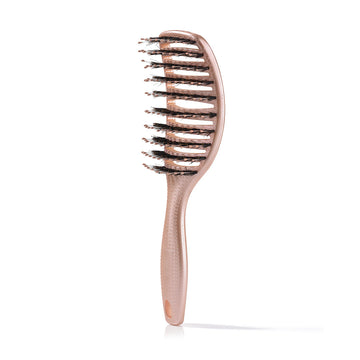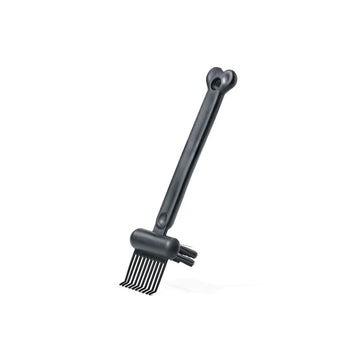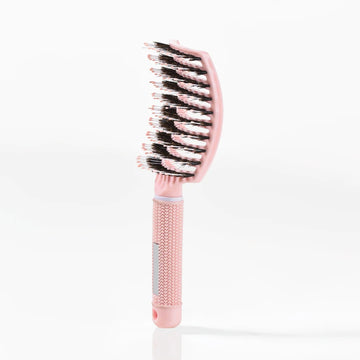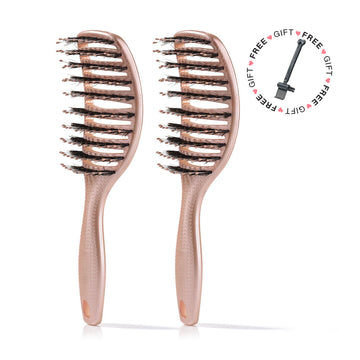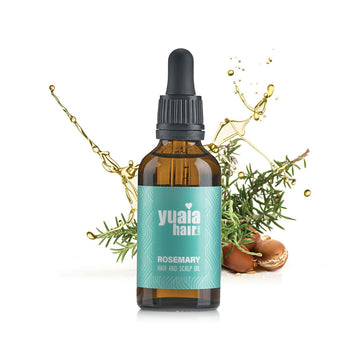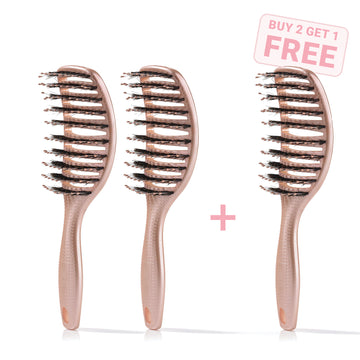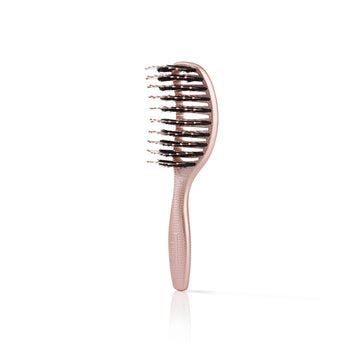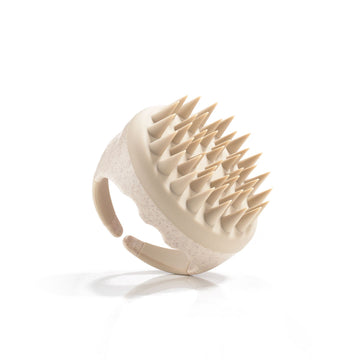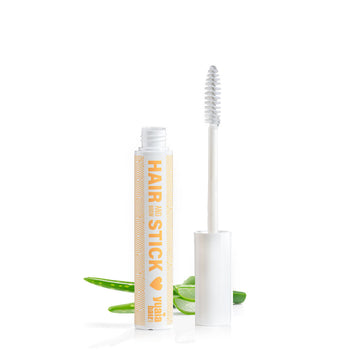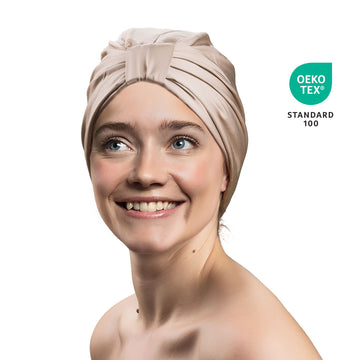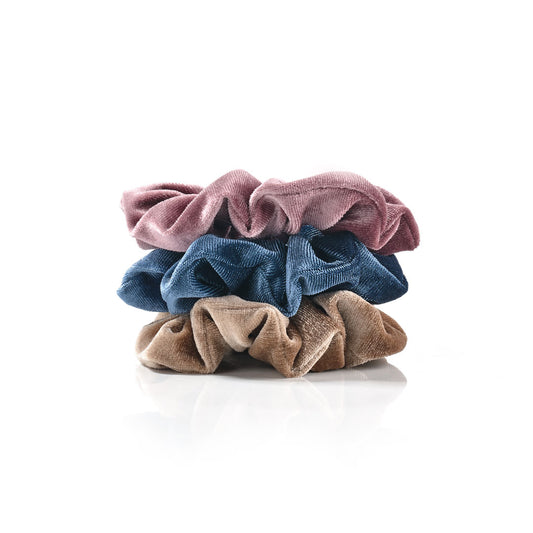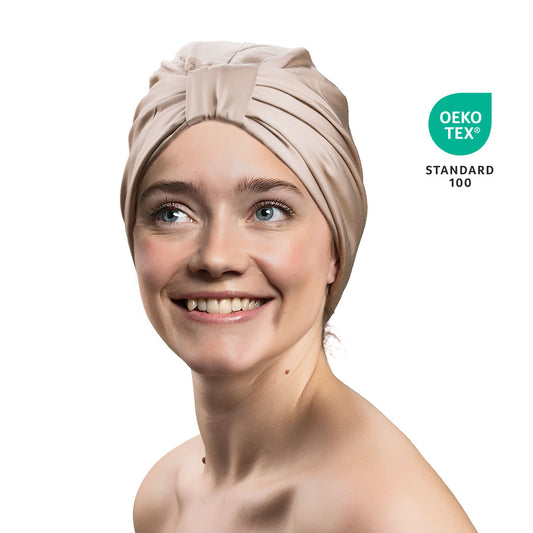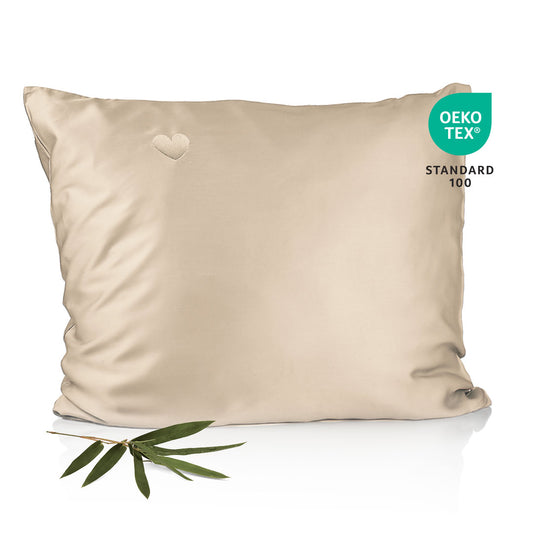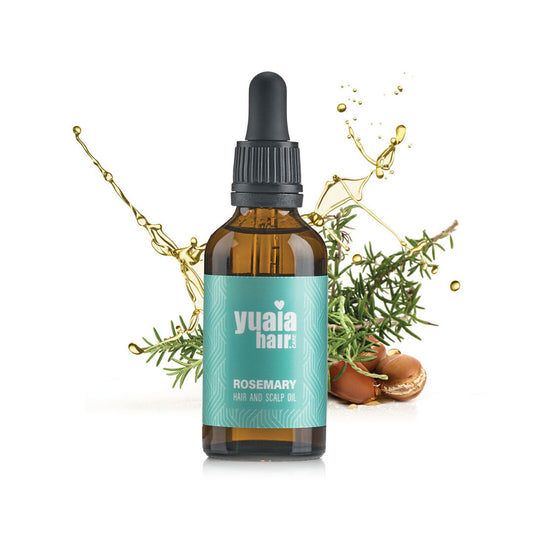
Pre-bedtime haircare routine
Establishing a pre-bedtime haircare routine can significantly reduce overnight damage and support healthier, silkier hair. Begin by gently brushing your hair with a soft-bristle brush or wide-tooth comb to remove tangles and evenly distribute the scalp’s natural oils. These oils act as a natural conditioner, helping to protect and nourish the hair shaft while you sleep. Always ensure your hair is completely dry before going to bed, as wet hair is more susceptible to friction, breakage, and split ends during movement.
If you’ve washed your hair in the evening, allow time for air-drying or use a low-heat setting on your hairdryer. To further protect your hair, consider loosely braiding it or wrapping it in a bamboo bonnet. These materials reduce friction, prevent tangling, and help maintain moisture levels overnight, resulting in smoother, shinier hair in the morning.
Protective hairstyles for long hair
Choosing the right hairstyle before bed can make a significant difference in maintaining hair health and preventing overnight damage. When long hair is left unprotected during sleep, it tends to tangle and break easily. Doing a suitable hairstyle not only minimizes these risks but also helps maintain your desired hair texture and style.
Loose braids
Loose braids are a simple and effective overnight hairstyle, particularly suited for straight or wavy hair. They help prevent knots and friction while creating natural waves by morning. Braiding with gentle, even tension protects the roots from stress, while applying a leave-in conditioner before braiding helps lock in moisture. Securing the braid with a soft, fabric-covered elastic reduces breakage at the ends.
For added protection, wrapping the braid in a bamboo bonnet can minimize friction against bedding. This low-effort style supports healthy hair by preserving texture, reducing damage, and promoting smoother, more manageable strands upon waking.
High, loose bun
A high, loose bun secured with a velour scrunchie is an excellent overnight hairstyle for minimizing friction and preserving hair health. By keeping hair lifted off the neck and away from the pillow, this style reduces tangling, creasing, and unnecessary pulling. Velour scrunchies are especially gentle compared to standard hair ties, as they help prevent breakage and avoid leaving dents in the hair. This soft, breathable option maintains hair smoothness while ensuring comfort during sleep, making it a convenient and protective choice for those looking to reduce damage and wake up with well-managed hair.
The pineapple method
For those with curly hair or textured hair, the 'pineapple' method is an effective and popular technique. It involves loosely gathering the hair on top of the head and securing it with a soft scrunchie. This elevated position helps maintain curl shape and volume by avoiding compression during sleep.
The method also reduces frizz, preserves curl definition, and prevents tangling. Wrapping the hair in a bamboo bonnet or using a bamboo pillowcase can enhance the results by minimizing friction and retaining moisture.
Using this technique helps extend the life of styles, while making morning maintenance easier. It's a simple yet efficient way to protect curly hair overnight.
Rotate hairstyles for balanced protection
Alternating between these hairstyles throughout the week can prevent strain on the same areas of the scalp and hair, promoting balanced hair health over time. These simple yet effective strategies support the long-term goal of waking up with smoother, healthier, and more manageable long hair.
Choice of bedding materials matter
The material of your pillowcase plays an important role in haircare. Traditional cotton pillowcases can cause significant friction due to their coarse texture, which leads to tangling, frizz, and eventual breakage. Cotton also has a tendency to absorb moisture, which can strip your hair of its natural oils, leaving it dry and more susceptible to damage.
Benefits of bamboo pillowcases
Switching to bamboo pillowcases can noticeably improve hair condition overnight. These smooth fabrics reduce friction, helping hair glide rather than catch, and thus lower the risk of breakage.
Bamboo pillowcases are also less absorbent than cotton, helping retain natural oils and moisture in your hair. This helps prevent dryness and brittleness.
Additionally, bamboo is breathable and hypoallergenic, which benefits both hair and scalp by reducing irritation. Using a bamboo pillowcase will make hair easier to manage in the morning, with less frizz and fewer tangles.
This simple switch can support healthier, shinier hair with minimal effort as part of your nighttime routine.
How a bamboo bonnet can also help
Using a bamboo bonnet can be especially helpful for those who move a lot in their sleep. It stays in place to reduce friction and keep hair secure, which helps prevent tangling and frizz. The breathable material also maintains hydration without causing sweating.
People with long or textured hair often find that a bamboo bonnet preserves volume and curl shape. It’s also useful for keeping protective styles like braids or twists intact overnight.
For extra protection, some combine a bonnet with a bamboo pillowcase. This ensures that if the bonnet slips off, hair still rests on a gentle surface. Using a bamboo bonnet is an easy way to protect your hair’s health and appearance.
Additional tips for protecting long hair
-
Avoid tight hair ties and metal hair accessories, as they can tug or break strands—especially if you move during sleep.
-
Use soft, fabric-covered ties or coil hair bands to secure your hair gently, avoiding creases and unnecessary tension.
-
Apply a light leave-in conditioner or nourishing oil before bed to maintain moisture and prevent dryness.
-
Choose overnight-specific products that offer slow, deep hydration throughout the night.
-
Maintain a cool, slightly humid sleeping environment to protect your hair from indoor dryness.
-
Use a humidifier during colder months to ensure consistent moisture levels for both hair and scalp.
-
Combine these practices for stronger, shinier, and softer hair each morning.
Common mistakes to avoid
Certain nighttime habits can unintentionally cause damage to your hair, particularly when practiced consistently. One common mistake is sleeping with wet or damp hair. In this vulnerable state, the hair shaft is more prone to breakage due to increased friction and reduced elasticity.
Another frequent issue is tying hair tightly before bed, such as in a high ponytail or tight bun. These styles can place unnecessary strain on both the hair strands and scalp, leading to stress-related damage. Over time, this tension may even contribute to traction alopecia, a condition where hair is pulled out from the root over time.
Why a nighttime haircare routine matters
Taking the time to care for your hair before bed is a worthwhile investment that pays off in both the short and long term. With the right approach, you can not only preserve the health and beauty of your long hair but also streamline your morning routine by reducing the need for excessive detangling and styling.
By adopting protective styles, such as loose braids or soft buns, choosing bedding materials that reduce friction, and avoiding common nighttime mistakes like sleeping with wet hair, you significantly decrease the risk of breakage and moisture loss. These thoughtful practices allow your hair to recover and strengthen overnight, leading to improved texture, shine, and manageability over time.
Over time, this commitment to care results in stronger, tangle-free hair and noticeably fewer split ends. Whether your goal is to grow your hair longer, maintain a specific style, or simply enjoy healthier locks, a dedicated nighttime routine is a foundational step toward waking up to better hair days—every day.
Frequently Asked Questions
How can I prevent my long hair from tangling while I sleep?
To prevent tangling, gently brush your hair before bed, use a soft fabric hair tie or scrunchie, and consider loosely braiding your hair or putting it in a high, loose bun. Sleeping on a bamboo or silk pillowcase can also reduce friction and tangling.
Is it better to sleep with my hair up or down if I have long hair?
It's generally better to sleep with your hair loosely secured in a braid, bun, or the pineapple method rather than leaving it completely down. This helps minimize friction, tangling, and breakage during the night.
What type of pillowcase is best for protecting long hair overnight?
Bamboo or silk pillowcases are best for protecting long hair. They create less friction than cotton, help retain moisture, and reduce the risk of frizz, tangling, and breakage.
Should I apply any products to my hair before bed?
Applying a light leave-in conditioner or nourishing oil before bed can help maintain moisture and prevent dryness. Choose overnight-specific products for deep hydration and avoid heavy or greasy formulas that could weigh hair down.
Is it okay to sleep with wet hair if I have long hair?
Sleeping with wet hair is not recommended, as wet hair is more prone to breakage and friction damage. Always ensure your hair is completely dry before going to bed to protect its health and strength.
 2-5 day delivery
2-5 day delivery
 25.000+ satisfied customers
25.000+ satisfied customers
 Satisfaction Guarantee
Satisfaction Guarantee



